Polymorphic Relationships frightened me a little bit. I mean, who wouldn't be afraid of something called "Polymorphic Relationships." Even saying those words used to make me shiver, but that's what I hope to change for you.
In this tutorial, I want to help you grasp the concept behind polymorphic relationships. It's going to be fun because I won't explain it with a boring use-case; instead, I'll explain it with pizza.
Common Relationships
Before explaining polymorphism, let's do a quick review of the three common relationships:
- One-to-One
- One-to-Many
- Many-to-Many
One-to-One
This relationship ties one thing to another. One pizza has one type of topping, and inversely that one topping belongs to one pizza.
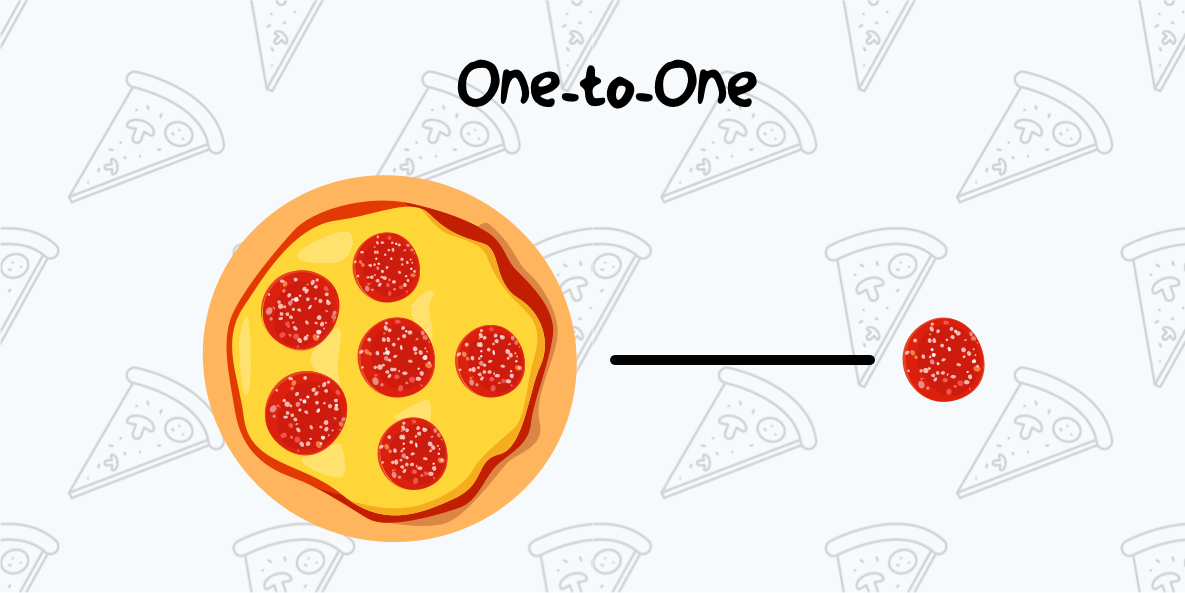
Check out the underlying table structure for this One-to-One relationship.
pizzas
id - integer
toppings
id - integer
name - string
pizza_id - integer
The toppings table has a unique foreign key pizza_id that references the id from the pizzas table, creating our One-to-One relationship.
Of course, a pizza with only one topping seems kind'a crazy. In most cases a pizza will have many toppings. This brings us to the next relationship.
One-to-Many
This relationship ties one thing with many other things. From our scenario, one pizza can have many toppings, and inversely many toppings belong to one pizza.
 View Website
View Website
 View Website
View Website
 View Website
View Website
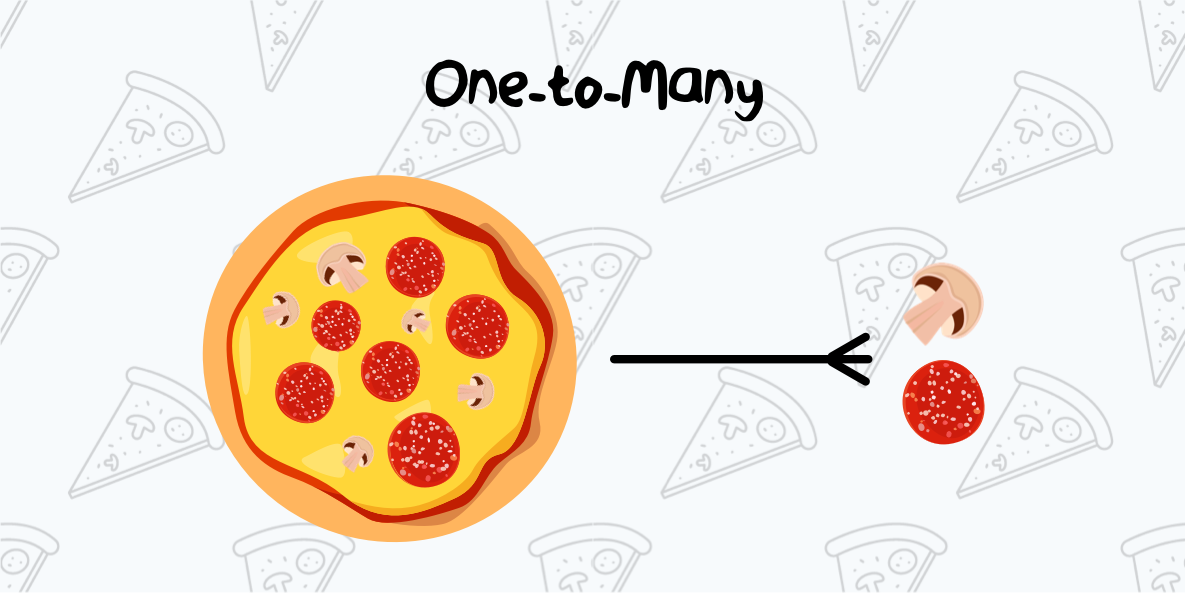
Here is the simple database structure for this table:
pizzas
id - integer
toppings
id - integer
name - string
pizza_id - integer
You may have thought that this is the same structure as our previous relationship, and you're right!
This relationship will have the same structure; but, there is a small difference. In a one-to-one relationship the pizza_id foreign key is unique. In a one-to-many relationship, the foreign key is not unique, allowing the pizza to have many toppings.
Now, what if we wanted to have many pizzas with many toppings? The best way to accomplish this is with a many-to-many relationship.
Many-to-Many
With a many-to-many relationship, we use a lookup (or intermediate) table to define the relationship between pizzas and their toppings.
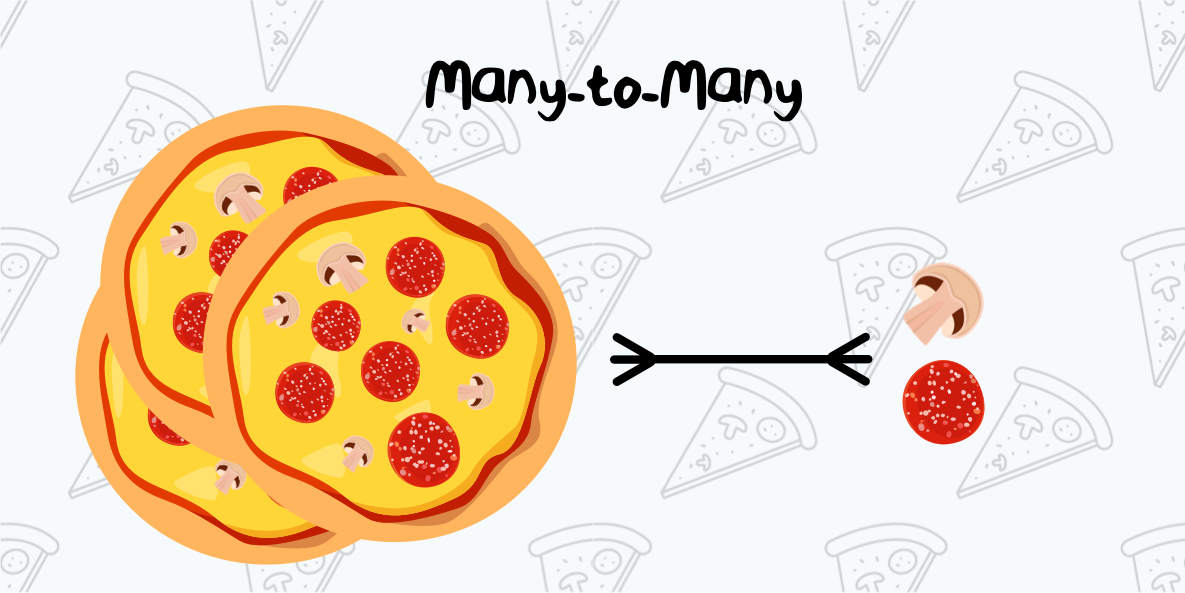
Take a look at the table structure for our many-to-many relationship:
pizzas
id - integer
pizza_toppings
pizza_id - integer
topping_id - integer
toppings
id - integer
name - string
The pizza_toppings lookup table has two foreign keys that reference the pizzas and the toppings tables. This lookup table creates our relationship between many pizzas and many toppings.
Those are the three most common types of relationships.
Now that we understand those, we can jump into Polymorphic Relationships.
Hello Polymorphism
What if we introduced a new food item into our scenario? Say, for instance, Hot Sandwiches! If we want the sandwiches to include the same toppings as a pizza, how could we do that in our database?
That's when we say, "Hello, Polymorphism!"
Polymorphic Relationships have a lookup table, similar to a many-to-many, however; it will also have an additional column specifying the food item.
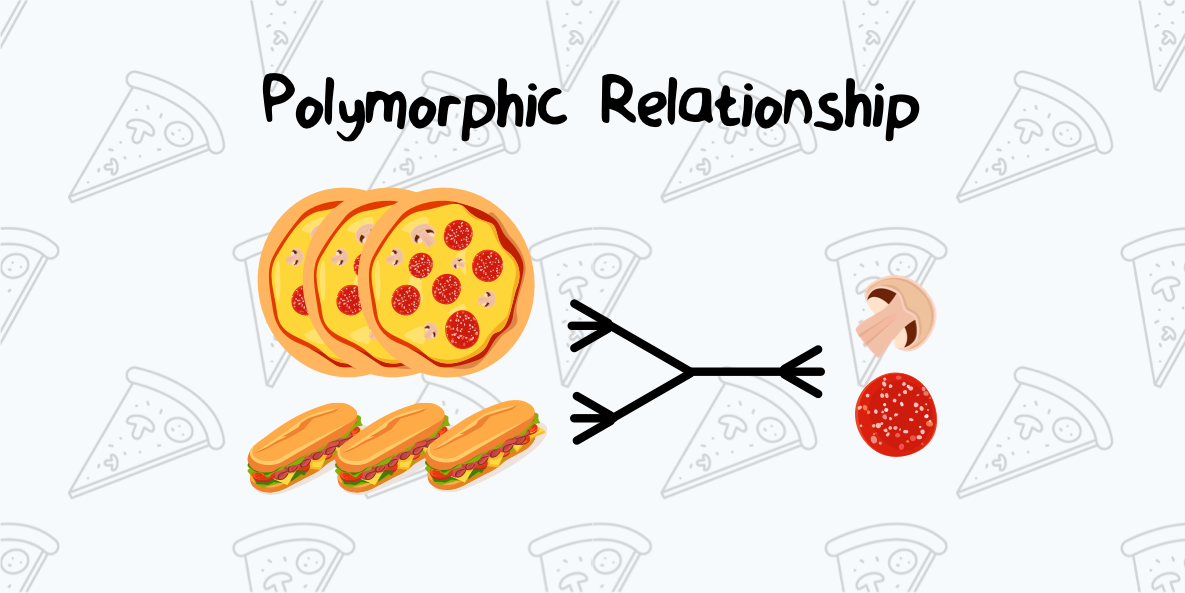
Here is the table structure for our polymorphic relationship:
pizzas
id - integer
sandwiches
id - integer
toppings
id - integer
name - string
toppables
topping_id - integer
toppable_id - integer
toppable_type - string
In this relationship, the food item (pizza or sandwich) is not directly specified; whereas, in our many-to-many relationship, the pizza_toppings table directly specifies the food item (pizza).
With a Polymorphic relationship, our food can be "morphed" into different things (pizza, sandwiches, etc.). Now, any new food item we add to the menu can be toppable or have many toppings.
What's important to remember is that the tables in a polymorphic relationship can be "morphed" or dynamic.
How Polymorphism works
Polymorphic relationships work by using a lookup table with an additional column specifying which table the foreign key should reference.
In non-polymorphic relationships, the foreign keys references a primary ID in a specific table. On the other hand, a foreign key in a polymorphic lookup table can reference many tables.
Polymorphism Example
Polymorphic relationships are available in any language that utilizes a Relational Database. I will show you a few code examples of a Polymorphic Relationship using PHP and the Laravel Framework using this same table:
pizzas
id - integer
sandwiches
id - integer
toppings
id - integer
name - string
toppables
topping_id - integer
toppable_id - integer
toppable_type - string
First, we will create a new Eloquent Model called Pizza which has a relationship called toppings():
<?php
namespace App;
use Illuminate\Database\Eloquent\Model;
class Pizza extends Model
{
/**
* Get all of the toppings for this pizza.
*/
public function toppings()
{
return $this->morphToMany('App\Topping', 'toppable');
}
}
To get the toppings for a pizza, we can write the following code:
$pizza = App\Pizza::find(1);
foreach ($pizza->toppings as $topping) {
//
}
How cool is that!
Next, we could also retrieve the inverse of this relationship from a Topping Model:
<?php
namespace App;
use Illuminate\Database\Eloquent\Model;
class Topping extends Model
{
/**
* Get all of the pizzas that have a specific topping.
*/
public function pizzas()
{
return $this->morphedByMany('App\Pizza', 'toppable');
}
/**
* Get all of the sandwiches that have a specific topping.
*/
public function sandwiches()
{
return $this->morphedByMany('App\Sandwich', 'toppable');
}
}
And then we could say give me all the pizzas and sandwiches that have a specific topping:
$topping = App\Topping::where('name', 'onions')->first();
// Get all pizzas that have onions as a topping
foreach ($topping->pizzas as $pizza) {
//
}
// Get all sandwiches that have onions as a topping
foreach ($topping->sandwiches as $sandwich) {
//
}
Adding polymorphic relationships can make your app more efficient, flexible, and easier to program.
Digging Deeper
Polymorphic relationships can also be categorized into the three common relationships we covered earlier in the tutorial. A polymorphic relationship can also be one-to-one, one-to-many, and many-to-many.
The example relationship that we covered in this tutorial was a Polymorphic Many-to-Many Relationship. That's a mouthful, but as you can tell, it's not that difficult to comprehend.
If you would like to learn more about each of these Polymorphic relationships, be sure to head over to the Laravel documentation to learn about each one:
- Polymorphic One-to-One Relationships
- Polymorphic One-to-Many Relationships
- Polymorphic Many-to-Many Relationships
Conclusion
I hope this tutorial has helped you learn a little more about Polymorphic Relationships.
The best way to learn any concept is to just dive in and start creating. After implementing polymorphism into a few projects you will start to understand more and more. Eventually, the concept of utilizing "Polymorphic Relationships" will seem like a pizza cake ;)

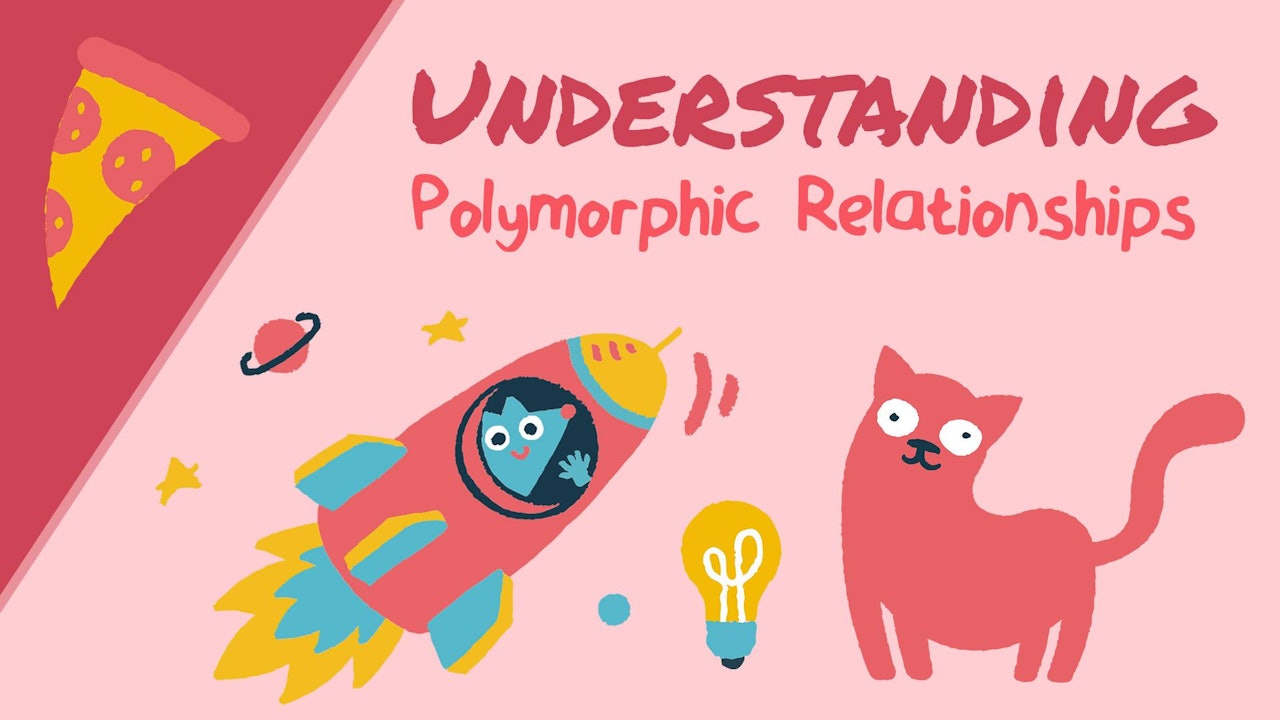
Comments (0)